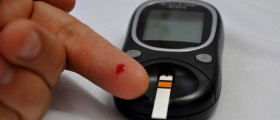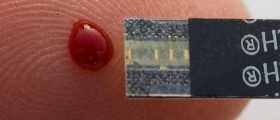
Even though many people may not be aware of this fact, pets can suffer from diabetes just as humans can. Therefore, it is very important to take a good care of your best friend and to pay attention to the possibility of this disease, reacting timely should it occur.
Triggers of Diabetes in Animals
The reasons behind diabetes in animals are quite similar to those when it comes to human beings. Namely, an animal's inability to produce enough insulin due to an organism malfunction, leads to diabetes. The main organ involved in insulin production is pancreas and, when it is unable to function properly, diabetes may strike. Basically, pets can suffer both from type 1 and type 2 diabetes.
Signs of Diabetes in Animals
The first sign of diabetes in animals is the weight loss, taking place regardless of the animal's normal, or even increased, appetite. Secondly, frequent urination and extremely strong thirst are another sign of this condition. Additionally, when an animal is suffering from diabetes, it might develop conditions like ketacidosis or its appetite may be lowered. Bad breath is yet another sign of diabetes in pets, along with other kinds of health complications, usually connected with this disease.
If your animal is suffering from an insulin overdose, it may experience seizures, wobbliness, fatigue and weakness. Also, the animal may seem to be dull and sleepy or, on the other hand, show extreme restlessness. Finally, coma may also act as a sign of animal diabetes.
If some of these symptoms appear, you are advised to keep an eye on your pet, monitoring its condition and seeking adequate treatment as soon as possible. Diabetes may lead to development of cataracts and loss of vision, especially in dogs. In cats, however, this disease commonly causes nerve damage and weakness.
Treatment for Diabetes in Pets
The first treatment your pet is likely to get is insulin, presenting a benchmark which helps the vet see whether the disease is diabetes type 1 or 2. Naturally, the insulin dosage will be adequate for your animal.
The insulin your pets get should be stored in a refrigerator and should never be mixed with anything else. When you mix the insulin itself, do not do this violently, but, rather be gentle and roll instead of shaking. Also, keep in mind never to use insulin once it has expired.
Before you administer the insulin to your pet, clip the parts of the hide covering the area. This will make the process less difficult. Finally, pay attention to your pet's glucose levels since this can make all the difference between a state of emergency and the pleasant time you spend with your best friend. Make sure you dog eats the right, healthy food and has plenty of exercise daily. These factors will keep diabetes at bay.

















Your thoughts on this
Loading...